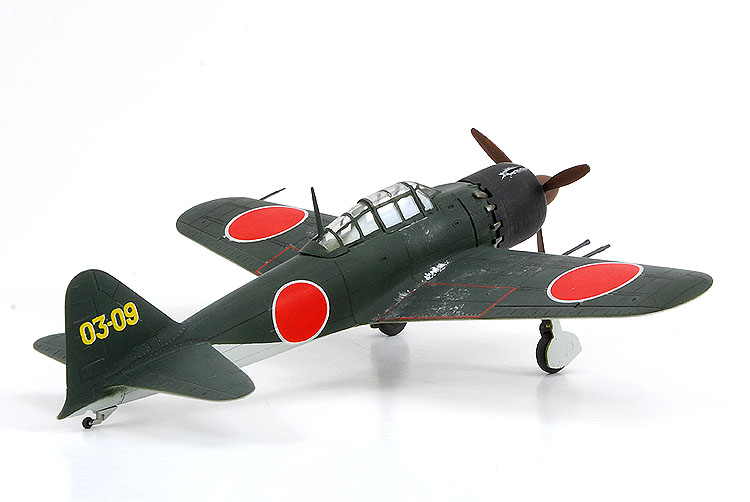

I wanted a simple, cheap Zero to add to my collection without much effort and that is exactly what Academy's kit supplied.
Kit:
Aftermarket:
Date:
Academy (AC12465)
None
2005
This model started off simply to keep me building after my usual post-model contest slump. Well, my attempt to keep modelling failed and it took a few more years to finish
slamming this ‘quick build’ kit together.
Like Academy’s other 1/72nd scale releases in the 2000s the Zero is a well engineered, tight fitting and affordable kit. Most of these kits I have seen are selling in the $10 to
$15 range which puts them well below their Hasegawa competition. So for that money what’s in the box?
The parts are molded in a light grey plastic that cuts, sands and glues well and all the parts feature nicely recessed panel lines. The canopy comes molded in three parts so the
modeller can chose to have the canopy open if they desire. Since simplicity was my goal, I just kept everything closed.
As I built this model I noted that the part’s fit was nice and tight and I only needed a little bit of Gunze’s Mr. Surfacer liquid putty to seal the joints and seams. Be careful
when installing the main landing gear as they are fragile and I accidentally ended up cutting off one of the axles that holds the wheel in place. With the landing gear I noted
three shortcomings. The main wheels have two noticeable ejector pin marks in them and the tapered axle hole prevents you from simply turning the wheels around and hiding them
behind the gear doors. I also noticed that the main gear doors didn’t seem to sit in line with the landing gear legs. I minimized this swapping the left hand and right hand doors
but this wasn’t the best solution.
Markings for this model were supplied in the kit and responded to Gunze’s Mr. Marksofter. The red circles seemed to cover the dark green Polly Scale paint but they trapped air
along the panel lines. The yellow tail codes were printed over a white backing, but they were slightly out of register and invisible to spot before they were on the model. By
this time, I didn’t care because I was simply slamming everything together to get it finished.
Weathering was limited to light dry-brushing of silver paint to replicate the flaking paint that seems to have appeared on all Japanese airplanes late in the war. I over did the
silver, so I followed along with some dry-brushed dark green to tone it down a little.
Overall this was an easy build and I would recommend it to a new builder; maybe not for their first kit because of the landing gear but certainly for a second or third.
Unfortunately this quick build took a few years longer than I intended but it was in no way the fault of the kit.
After I finished this model I read that Academy’s Zero has some outline problems and that Hasegawa’s kits are more accurate. This might be true but for me, Academy’s offering
still looks like a Zero.